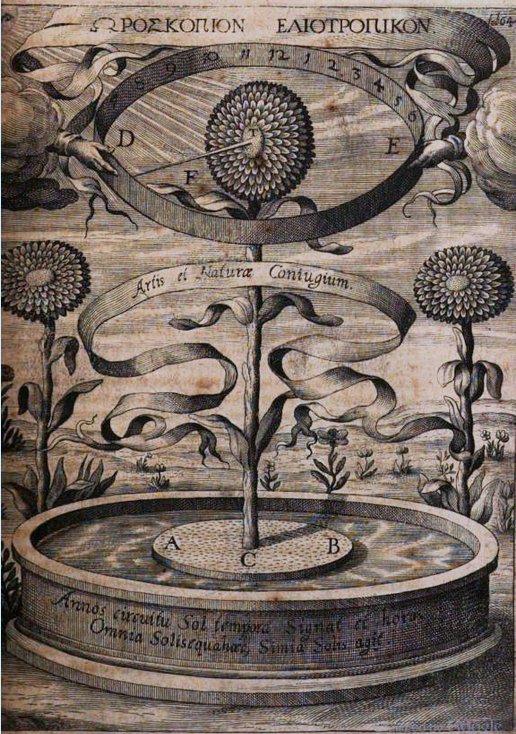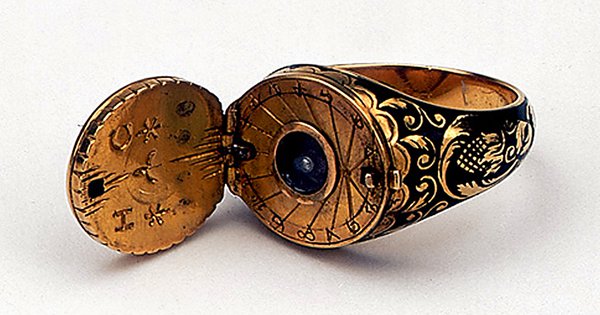An experiment in ‘florology’
This post was written by Rory McEvoy
Recently, I have been looking at the role of timekeepers in the history of science and whilst reading around the pre-pendulum era, happened upon a blog-worthy experiment conducted by Athanasius Kircher (1601/2-80).
Kircher, a German Jesuit polymath, applied the then known phenomenon of heliotropism as a method of timekeeping.
He thought that the daily motion of sunflowers as they followed the Sun was caused by magnetic influence and thus inferred that they could be usefully used as a clock. As can be seen in his magnificent illustration, Kircher planted the sunflower in a cork pot and floated it on water, providing a frictionless pivot, and inserted a pointer through the flower to indicate time against the annular chapter.

Kircher noted that his clock was disturbed by the slightest of breezes and, when kept away from sunlight, it withered and its motion slowed. This, however, did not end the experiment. He tells us that he had the good fortune of meeting an Arab trader who happened to have amongst his aromatic wares a substance with similar horological properties to the sunflower.
The deal was struck and Kircher parted with his sundial signet ring for the horological stuff.
It has to be said that this episode is possibly a theatrical device to colour the account and introduce the use of sunflower seeds and root instead of the plant itself, but worth repeating – even if it’s just an excuse to show a beautiful horizontal sundial ring!

Today, we know that this diurnal motion is caused by sunlight and so Kircher’s clock could never have worked in the way intended, but one cannot help admire his ingenuity in applying a mystery of the physical world to tell the time. M. Becker’s 2011 time lapse movie shows that it is possible to use a flower as a twenty-four hour clock, but only in summertime at a latitude close to the north or south pole.